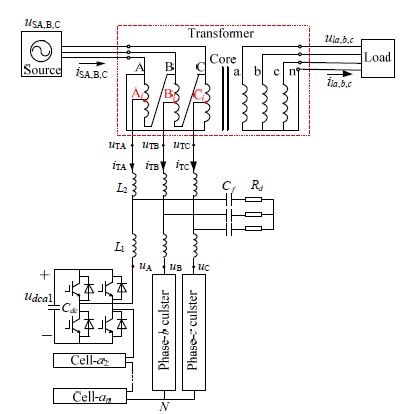- ALL COMPUTER, ELECTRONICS AND MECHANICAL COURSES AVAILABLE…. PROJECT GUIDANCE SINCE 2004. FOR FURTHER DETAILS CALL 9443117328


Projects > ELECTRICAL > 2017 > IEEE > POWER SYSTEMS
This paper describes an improved transformer winding tap injection distribution static synchronous compensator (WTI-DSTATCOM) for medium-voltage reactive power compensation. The cascaded multilevel converter (CMC)-based DSTATCOM is connected to the special-designed winding taps on the primary windings of the transformer instead of the conventional point of common coupling (PCC). The voltage stress for DSTATCOM to handle is reduced. The winding tap injection (WTI) method can make full use of the spare capacity of the transformer and obtain a flexible connection voltage for DSTATCOM. The compensation mechanism and winding current distribution after currents injection are analyzed by phasor diagrams under steady state. A nonlinear passivity-based control (PBC) algorithm is designed for inner loop current control and a three-layer voltage balancing control strategy is applied to balance the dc capacitor voltage.
Passivity-Based Control, Lagrangian Modeling.
This paper has presented an improved WTI-DSTATCOM for medium-voltage reactive power compensation. DSTATCOM is connected to the taps on the primary windings of the transformer to eliminate the auxiliary coupling transformer. This connection type can increase the capacity utilization of transformer and gain a compromise between the voltage ratings and current ratings of DSTATCOM. The major contribution of this paper can be summarized as follows: 1) The compensation mechanism is first elaborated and validated by both simulation and experimental results. The compensation mechanism consists of two important parts: transformer core saturation problem and winding currents distribution after compensation. 2) The nonlinear passivity based control (PBC) is first introduced to control WTI-DSTATCOM in this paper. 3) A new test bench is developed in this paper. A 7-level CMC-based DSTATCOM with LCL filter is designed for current injection. More comprehensive tests, including both steady-state and dynamic performance, are done and analyzed in this paper.
GRID CONNECTED PV SYSTEM
